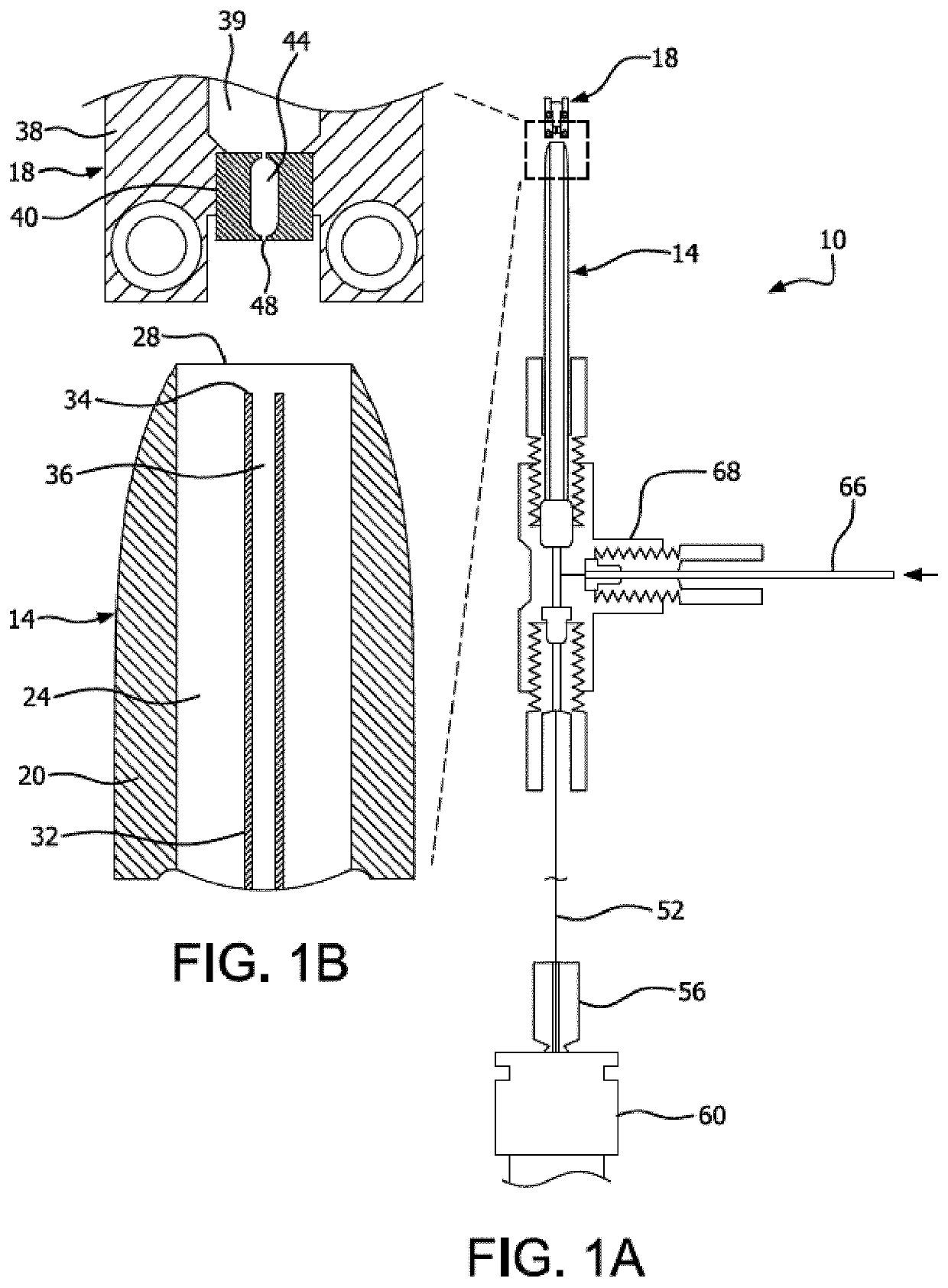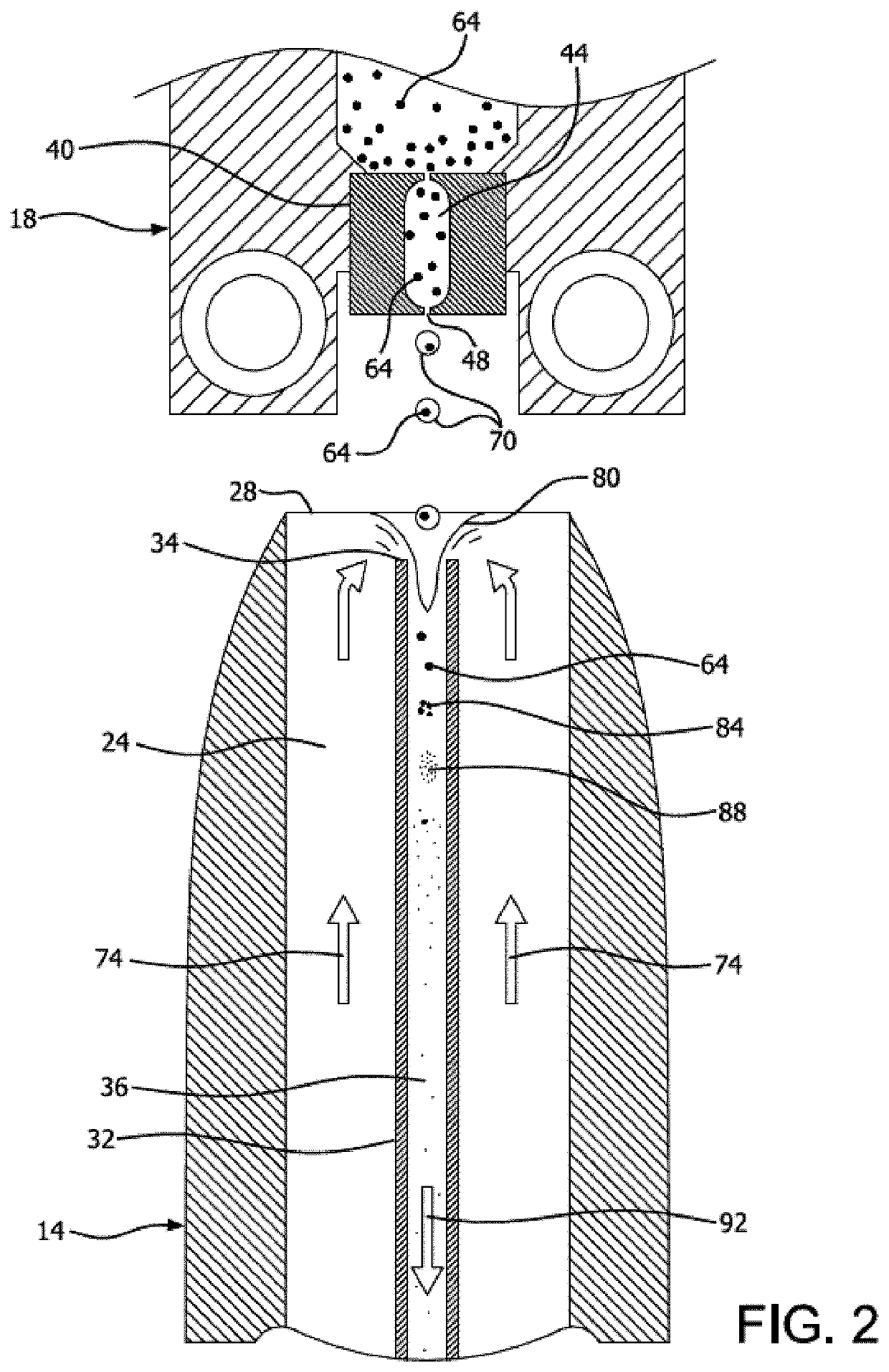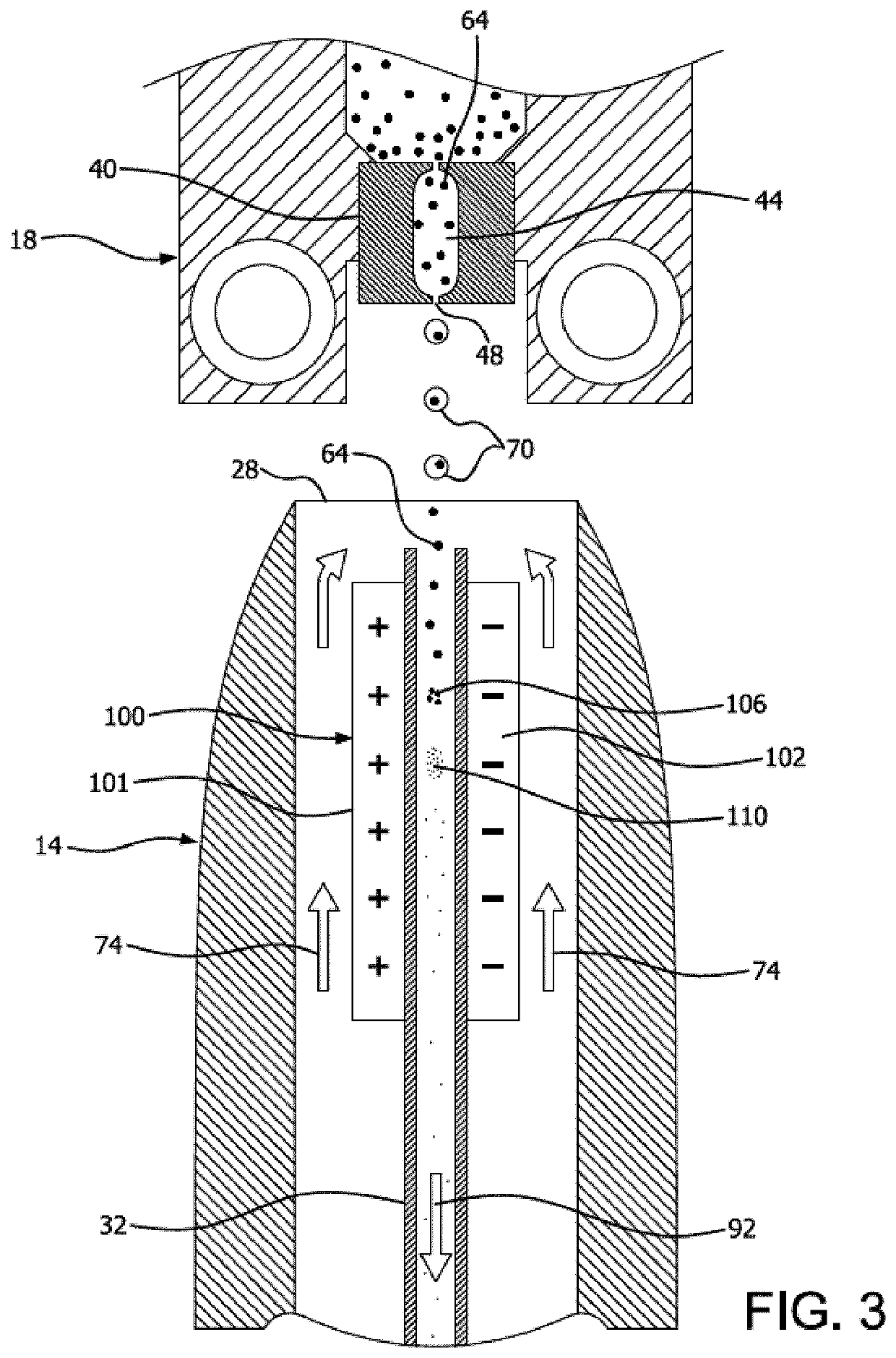Rapid native single cell mass spectrometry
a single cell, mass spectrometry technology, applied in the field of mass spectrometry, can solve the problems of unfavorable untargeted the inability to detect single cell resolution, and the inability to target the molecular analysis by flow and mass cytometry
- Summary
- Abstract
- Description
- Claims
- Application Information
AI Technical Summary
Benefits of technology
Problems solved by technology
Method used
Image
Examples
Embodiment Construction
[0042]A method for analyzing single cells by mass spectrometry from a sample containing a plurality of cells includes the steps of providing a plurality of cells in a liquid medium and placing the cells and liquid medium in a single cell isolation and ejection system. Liquid medium containing a single cell is released from the single cell isolation and ejection system. The liquid medium and single cell are then captured in a capture probe containing a flowing capture probe solvent. The cell is lysed in the capture probe to disperse single cell components into the medium. The lysed single cell components are transported to a mass spectrometer, where the lysed single cell components entering the mass spectrometer are spatially and temporally separated from any lysed single cell of another cell from the sample entering the mass spectrometer. Mass spectrometry is conducted on the lysed single cell components. The lysis can be induced in the capture probe by different methods and structu...
PUM
 Login to View More
Login to View More Abstract
Description
Claims
Application Information
 Login to View More
Login to View More - R&D
- Intellectual Property
- Life Sciences
- Materials
- Tech Scout
- Unparalleled Data Quality
- Higher Quality Content
- 60% Fewer Hallucinations
Browse by: Latest US Patents, China's latest patents, Technical Efficacy Thesaurus, Application Domain, Technology Topic, Popular Technical Reports.
© 2025 PatSnap. All rights reserved.Legal|Privacy policy|Modern Slavery Act Transparency Statement|Sitemap|About US| Contact US: help@patsnap.com



